Moving Average Indicator: Profitable Trading Strategies 2025
Updated: 21.03.2025
Moving Average: how to use the indicator - the moving average method and profitable trading strategies (2025)
Moving Average is one of the most popular trend indicators for technical analysis of charts. It is on the basis of the moving average that tens of thousands of different indicators and advisors, as well as a huge variety of different trading strategies, have been created.
Despite the fact that the Moving Average indicator is a lagging indicator, it can be very effectively used to make a profit, which I will discuss in this article.
Apart from the methods for constructing the Moving Average, we can highlight the main settings that you will have to work with:
Moving average shift - this parameter is necessary to shift the moving average on the chart. In standard settings, the shift is 0 – the Moving Average indicator line is formed at the same level as the current candle. If you change the shift, for example, to “2” or “-2”, then the indicator line will move two candles forward or two candles back: As you can see, the blue Moving Average line with a shift of “-2” lags behind the chart, and the red moving average line with a shift of “2” is two candles ahead of the chart.
Data for plotting (“apply to”) is the data that will be taken from each candle. According to the standard, this is “Close” data - the closing price of the candle. You can also build a moving average using the following data:
Such zones perform very well in trending price movements, but you can also use just one moving average line, which will indicate a dynamic trend line: In this example, we used the Exponential Moving Average indicator line with a period of “15” on the H4 chart (4 hours). Notice how precisely the moments of trend continuation are indicated - the Exponential Moving Average line serves as resistance, after the price breaks upward it becomes support, and then again resistance. This indicator can easily solve all the problems associated with finding trend lines and adding them to the price chart.
Overbought occurs at moments when the bulls are not ready to pay a high price for an asset - they go over to the side of the bears and begin to sell the product. Oversold, on the contrary, occurs when sellers are not ready to continue selling an asset so cheaply - they become buyers and begin to drive the price up. All this is very easily visible on the graphs - this is indicated by the following factors:
For an uptrend, we must avoid overbought zones and, just like in trading from support levels, wait for the price to return to the average value zone, and only then open a trade for an increase: A very simple scheme - we open up at the most advantageous point (at the very bottom of the price rollback). Of course, there are also more protracted pullbacks, and no one has canceled price reversals, so, like any other trading strategy, this trading idea does not guarantee 100% results. Don't forget about the risks!
For a downward trend, everything is exactly the opposite - we do not open trades in presold zones, but confidently open downwards from the resistance zone formed by two Exponential Moving Average lines with periods of “10” and “20”: But there are situations when the trend is very strong and the price does not return to the moving average lines for a long time. In such cases, you need to use common sense and look for entry points based on other indicators, for example, support and resistance levels. As a rule, the price still breaks through the levels, and after that it fixes on them - these are our entry points in strong trend movements:
For example, momentum can be determined using three moving averages:
The fact is that the indicator is very flexible in settings and depends directly on what the trader wants to get in the end:
A trader should always know what he wants to get from this indicator and “adjust” it to the current asset, chart and time frame. Literally, you need to take the indicator and “play around” with the settings. See how it shows itself on history or, even better, run the indicator through the strategy tester (available in the MT4 terminal).
To search for signals in order to open trades for a period of no more than an hour, “fast” Moving Average are suitable:
The disadvantages of “fast” moving averages are that when using them it is very difficult to get a global picture, but it is enough to simply find a situation to open a short-term trade: It is also worth taking into account “noise” - false signals from fast moving averages. Accordingly, the shorter the Moving Average period, the more “noise” there will be.
“Slow” moving averages include lines that do not react to small price changes, but show global trends. For example, these are Moving Average with a period greater than “50”: Of course, the “slow” moving average also has its disadvantages. For example, if the trend changes sharply to the opposite one, the indicator line will not react to the changes immediately, but after some time.
For greater efficiency, fast and slow moving averages are used together:
To determine the end of a sideways movement, the lines of the Moving Average indicator are practically “useless”. First of all, you will need to look at the tops and bottoms, which will mark the beginning of a new trend. If the trend is downward, then new depressions will appear lower than the previous ones. For an uptrend, you should pay attention to the peaks, which should be higher than the previous ones.
But Moving Average lines can also be useful and confirm the beginning of a trend. You need to wait for the moment when the trend pullback does NOT break through the line of the Moving Average indicator, but bounces off it and continues its fall or rise in price. This will confirm the trend that has begun:
The essence of the strategy is very simple:
The most commonly used periods for moving averages are:
In fact, Envelopes simply draws additional lines above and below the regular Moving Average indicator. To build such lines, in the Envelopes settings you need to specify percentages - the distance at which auxiliary lines will be added. This indicator simply builds a price channel and should not be compared with Bollinger Bands, since their operating principles are different. Working with such a channel is simple - if the settings are selected correctly, the channel boundaries will serve as overbought and oversold zones, which means they will push the price towards the center of the channel: You can also use the Envelopes indicator with Bollinger Bands to determine more reliable entry points. For example, if a candle opened outside the Bollinger Bands and on the border of the Envelopes indicator, then this is a good entry point for a price reversal: Here it is worth understanding that the periods of Bollinger Bands and the period of the Envelopes indicator must coincide. In the example above, the periods are "14".
The moving average line with a period of “200” (our example) very easily determines the boundaries of the trend and does not allow making such a mistake. It is worth considering that in an uptrend, transactions after a rollback should be made only if the price has updated the previous maximum. In a downtrend, we must wait for the previous depression to update and only then look for a downward entry point.
A moving average with a long period indicates to us the presence of a trend: as long as the price is above the line, the trend will be upward, so trades should only be opened for an increase; the price is below the Moving Average line – the trend is downward and transactions should also be opened only for a decrease. Those. The trading scheme is simple:
Also, varieties of moving averages (with different calculation formulas and settings) are part of a huge number of trading strategies and trading systems, as well as trading robots. Now it is very difficult to imagine an indicator strategy that does not use the average price value.
For us traders, the moving average is a way to better understand the market and find the right points to open trades. If you have a tool at hand that can simplify the process of trading and understanding the market, then why not use it?!
Despite the fact that the Moving Average indicator is a lagging indicator, it can be very effectively used to make a profit, which I will discuss in this article.
Contents
- Method and formulas for constructing a moving average on a price chart
- Moving Average indicator parameters
- Moving average as a trend line or price return to the mean
- Moving average: overbought and oversold assets - mistakes of traders
- Determining momentum using moving averages
- Moving averages: practice of use
- The period of the moving average does not matter
- The correct time frame for working with the moving average
- Fast and slow moving averages
- Detecting sideways movements using moving averages
- Moving averages (Moving Average indicator): popular binary options trading strategies
- Strategy “three moving averages in trend trading”
- Strategy of “price crossing the moving average line”
- Moving average with a period of “50” - trend trading strategy for higher time frames
- Moving average with a period of “50” - trend trading strategy for short-term trading
- Strategies with the intersection of two lines of the Moving Average indicator
- Strategies with the intersection of three lines of the Moving Average indicator
- Envelope from moving averages - price channel from Moving Average
- Intersection of moving averages with a period of “50” and “200”
- Intersection of moving averages with periods of “10” and “30”
- Determining market phases using a slow moving average
- Moving averages: summing up
Method and formulas for constructing a moving average on a price chart
First of all, you need to understand the principles and methods of constructing a moving average on a price chart. There are several basic methods for constructing the Moving Average indicator:- Simple Moving Average
- Exponential Moving Average
- Linear Weighted Moving Average
Simple Moving Average
It doesn't take much intelligence to understand how a moving average is constructed. The standard Simple Moving Average indicator has:- Period “14” - takes data from the last 14 candles on the price chart
- Construction type “Close” - accepts for calculation only price values recorded when the candle closed
- Simple Moving Average = SUM (CLOSE (i), N) / N
- SUM – sum
- CLOSE (i) – closing price of a specific candle
- N – number of candles (indicator period)
Exponential Moving Average
Exponential Moving Average is a smoother version of the regular Moving Average. This became possible after adding a certain share of the use of the current price to the formula. The calculation formula itself is as follows:- Exponential Moving Average = (CLOSE (i)*P) + (Exponential Moving Average (i -1) * (1-P))
- P – share of price value usage
- CLOSE (i) – closing price of a specific candle
- Exponential Moving Average (i-1) – value of the moving average of the previous period
Linear Weighted Moving Average
Linear Weighted Moving Average (or simply WMA) is another popular moving average method. When calculating a linearly weighted moving average, more weight is given to recent candles and less weight to earlier candles. Each element of the calculation in the Linear Weighted Moving Average is multiplied by a certain weighting factor, which allows you to give weight to some values and take it away from others. In this case, the Linear Weighted Moving Average formula looks like this:- Linear Weighted Moving Average = SUM (CLOSE (i)*i, N) / SUM (i, N)
- SUM - sum
- CLOSE (i) – closing price of a specific candle
- SUM (i, N) – sum of weighting coefficients
- N – smoothing period
Parameters of the Moving Average indicator
The moving average is used in various trading strategies. The reason is the flexibility of setting the Moving Average indicator. To properly configure the indicator, a trader must understand how it works and what data it needs as an output - on the price chart.Apart from the methods for constructing the Moving Average, we can highlight the main settings that you will have to work with:
- Period
- Shift
- Data to build (“apply to”)
Moving average shift - this parameter is necessary to shift the moving average on the chart. In standard settings, the shift is 0 – the Moving Average indicator line is formed at the same level as the current candle. If you change the shift, for example, to “2” or “-2”, then the indicator line will move two candles forward or two candles back: As you can see, the blue Moving Average line with a shift of “-2” lags behind the chart, and the red moving average line with a shift of “2” is two candles ahead of the chart.
Data for plotting (“apply to”) is the data that will be taken from each candle. According to the standard, this is “Close” data - the closing price of the candle. You can also build a moving average using the following data:
- Close – closing price of the candle
- Open – candle opening price
- High – maximum candle price
- Low – minimum candle price
- Median Price (HL/2) – average price (Maximum * Minimum / 2)
- Typical Price (HLC/3) – typical price (Maximum * Minimum * closing price / 3)
- Weighted Close (HLCC/4) – weighted price (Maximum * Minimum * closing price * 2 / 4)
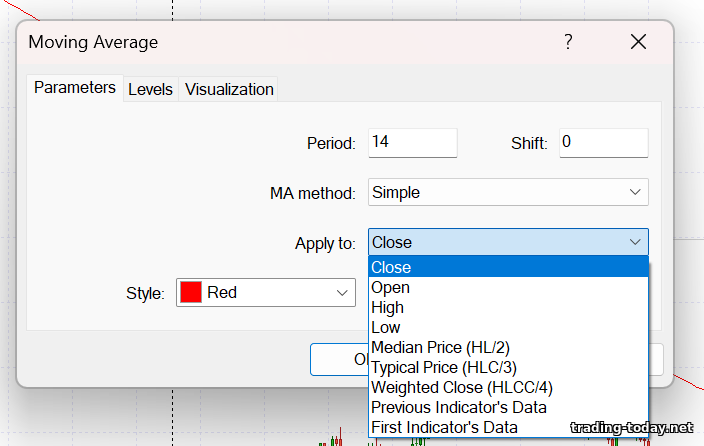
Moving average as a trend line or price return to the mean
From previous articles you already know that the price moves in waves. Every uptrend has pullbacks down, and every downtrend has pullbacks up. The price moves along support and resistance levels, and so also reacts to trend lines. If we depict this schematically, we get the following picture: But any level of supply and demand is an area of interest for traders. This is where we need moving averages. For example, if you add an Exponential Moving Average with a period of “10” and an Exponential Moving Average with a period of “20” to the chart, they will act as dynamic trend zones of support and resistance: The price tends to return to the average price value - to the support zone or resistance zone, built by two lines of the exponential moving average. Please note that the stronger the price movement, the further the Exponential Moving Average lines diverge - the larger the support zone and resistance zone become.Such zones perform very well in trending price movements, but you can also use just one moving average line, which will indicate a dynamic trend line: In this example, we used the Exponential Moving Average indicator line with a period of “15” on the H4 chart (4 hours). Notice how precisely the moments of trend continuation are indicated - the Exponential Moving Average line serves as resistance, after the price breaks upward it becomes support, and then again resistance. This indicator can easily solve all the problems associated with finding trend lines and adding them to the price chart.
Moving average: overbought and oversold assets - mistakes of traders
Very often traders make the mistake of entering the market on price impulses. In appearance, everything is logical - the transaction is in the direction of the trend, which means there should be no problems. But, as a rule, most trend impulses are followed by a price rollback to the average value - to our support zone or resistance zone.Overbought occurs at moments when the bulls are not ready to pay a high price for an asset - they go over to the side of the bears and begin to sell the product. Oversold, on the contrary, occurs when sellers are not ready to continue selling an asset so cheaply - they become buyers and begin to drive the price up. All this is very easily visible on the graphs - this is indicated by the following factors:
- Horizontal support and resistance levels
- Candlestick formations
- Doji candles (candles with long shadows and a small body)
For an uptrend, we must avoid overbought zones and, just like in trading from support levels, wait for the price to return to the average value zone, and only then open a trade for an increase: A very simple scheme - we open up at the most advantageous point (at the very bottom of the price rollback). Of course, there are also more protracted pullbacks, and no one has canceled price reversals, so, like any other trading strategy, this trading idea does not guarantee 100% results. Don't forget about the risks!
For a downward trend, everything is exactly the opposite - we do not open trades in presold zones, but confidently open downwards from the resistance zone formed by two Exponential Moving Average lines with periods of “10” and “20”: But there are situations when the trend is very strong and the price does not return to the moving average lines for a long time. In such cases, you need to use common sense and look for entry points based on other indicators, for example, support and resistance levels. As a rule, the price still breaks through the levels, and after that it fixes on them - these are our entry points in strong trend movements:
Determining momentum using moving averages
Momentum is the rate of change in price movement. In simple terms, momentum shows us the strength of the trend, which gives us knowledge about the possible duration of the trend movement, as well as the likelihood of a price reversal.For example, momentum can be determined using three moving averages:
- Moving Average (Simple Moving Average ) with period “50”
- Moving Average (Simple Moving Average ) with period “100”
- Moving Average (Simple Moving Average ) with period “200”
- Simple Moving Average (50) will be closest to the price
- Simple Moving Average (100) will be between Simple Moving Average (50) and Simple Moving Average (200)
- Simple Moving Average (200) will be furthest from price
Moving average as a dynamic support level
Any moving average line should be regarded as a dynamic support level if it is below the price. But do not forget that the shorter the period of this line, the weaker its support level. The opposite is also true - the longer the period of the moving average, the stronger the support level: Typically, round numbers are used as a moving average period (10, 50, 100, 150, 200, etc., etc.), but traders also use periods associated with chart time frames. For example, period “60” for a minute chart – the number “60” means 60 minutes of an hour.Moving average as a dynamic resistance level
Just like in the horizontal levels of supply and demand, the moving average line has the property of becoming resistance after breaking through support. Everything can be remembered very simply and quickly: if the moving average line is below the price, then this is support and we should expect upward reversals from this level; if the Moving Average indicator line is above the price, then this is a resistance level - from this level it is worth opening trades down: Do not forget that the moving average settings are selected for the time frame, and may also vary depending on the asset used.Moving averages: practice of use
As for the practice of using moving averages, there are tens of thousands of strategies using the Moving Average indicator, as well as a countless number of tips for setting up these lines in certain situations. We will not be able to analyze all the options, but there are universal tips that will help you simplify the use of the moving average in your trading.The moving average period does not matter
Very often you will come across strategies using the Moving Average indicator and in most cases, the Moving Average settings will be different. Why is that?The fact is that the indicator is very flexible in settings and depends directly on what the trader wants to get in the end:
- Earlier signal
- Smoothed data
- Strong support and resistance levels
- Good confirmation of the beginning or end of a trend
A trader should always know what he wants to get from this indicator and “adjust” it to the current asset, chart and time frame. Literally, you need to take the indicator and “play around” with the settings. See how it shows itself on history or, even better, run the indicator through the strategy tester (available in the MT4 terminal).
Correct time frame for working with the moving average
The effectiveness of the Moving Average indicator itself directly depends on the choice of time frame. For example, there is no point in using a moving average with a period of “100” or “200” to search for a signal on the minute (M1) time frame. At the same time, “fast” Moving Average are not suitable for long-term trading.To search for signals in order to open trades for a period of no more than an hour, “fast” Moving Average are suitable:
- Exponential Moving Average with periods from 5 to 50
- It is also recommended to use at least two Moving Average indicators with different settings
- Moving Average with periods “50”, “100”, “200”, etc.
Fast and slow moving averages
“Fast moving averages” refer to lines that inform the trader about the smallest changes in the market situation. Simply put, they change their readings faster. Such Moving Average include indicators with periods from 1 to 50 (opinions may vary among different traders).The disadvantages of “fast” moving averages are that when using them it is very difficult to get a global picture, but it is enough to simply find a situation to open a short-term trade: It is also worth taking into account “noise” - false signals from fast moving averages. Accordingly, the shorter the Moving Average period, the more “noise” there will be.
“Slow” moving averages include lines that do not react to small price changes, but show global trends. For example, these are Moving Average with a period greater than “50”: Of course, the “slow” moving average also has its disadvantages. For example, if the trend changes sharply to the opposite one, the indicator line will not react to the changes immediately, but after some time.
For greater efficiency, fast and slow moving averages are used together:
- Slow Moving Average - to determine the global situation and identify strong trends
- Fast Moving Average – for finding entry points in trend movements
Detecting sideways movements using moving averages
It would seem that what could be simpler than determining a sideways trend using moving averages? It seems that everything is clear - the Moving Average lines often intersect, and the price moves horizontally - this is a sideways movement. The problem is how to then determine when the flat has ended, but here everything is not so simple.To determine the end of a sideways movement, the lines of the Moving Average indicator are practically “useless”. First of all, you will need to look at the tops and bottoms, which will mark the beginning of a new trend. If the trend is downward, then new depressions will appear lower than the previous ones. For an uptrend, you should pay attention to the peaks, which should be higher than the previous ones.
But Moving Average lines can also be useful and confirm the beginning of a trend. You need to wait for the moment when the trend pullback does NOT break through the line of the Moving Average indicator, but bounces off it and continues its fall or rise in price. This will confirm the trend that has begun:
Moving averages (Moving Average indicator): popular binary options trading strategies
Where would we be without trading strategies based on moving averages?! Let's look at some interesting binary options strategies that are most often used by experienced traders.Strategy “three moving averages in trend trading”
We will need three moving average lines with the following settings:- Exponential Moving Average with a period of “200” - a slow Moving Average for determining the global trend
- Exponential Moving Average with period “50”
- Exponential Moving Average with period “20”
- Using the Exponential Moving Average “200” indicator line, you need to determine the global trend: if the price is above this line, then the trend is upward and you should look for entry points only in the upward direction; if the price is below the Exponential Moving Average line, then the trend is downward and you should only work out downward signals
- We are waiting for the intersection of Exponential Moving Average “20” with Exponential Moving Average “50” - the 20th moving average should be closer to the price than the 50th
- We are waiting for confirmation of the trend, namely two price rollbacks from Exponential Moving Average “20” or Exponential Moving Average “50”
- At the time of the third and subsequent approaches of the price to the Moving Average lines, we open transactions in the direction of the current trend
Strategy of “price crossing the moving average line”
As you already understood from the name, the strategy will be based on the price crossing the moving average line. In this case, the Exponential Moving Average line with a period of “20” will be used. The essence of the strategy is that after trending price movements, sideways movements or consolidation appear. It is the sideways that we will look for as part of this strategy.- Using the moving average, we find a trend with at least one rollback from the Moving Average line
- Based on technical analysis, we determine that the price has stopped updating highs (in an uptrend) or lows (in a downtrend)
- We set the upper and lower horizontal boundaries based on the latest highs and lows (these will be the boundaries of the sideways movement)
- Trading pullbacks from sideways borders
Moving average with a period of “50” - trend trading strategy for higher time frames
For this trading strategy, we will need an Simple Moving Average or Exponential Moving Average with a period of “50” (see for yourself which is better for the assets you are going to trade), as well as a time frame of one hour (H1 and higher).The essence of the strategy is very simple:
- We wait for at least one price rollback from the moving average line with updating of bottoms or tops
- We open trades in the direction of the trend when the price, during a rollback, approaches the moving average line
- As soon as the bottoms or tops (depending on the trend) have stopped updating (the trend has ended), we stop opening trades and wait for a new trend
Moving average with a period of “50” - trend trading strategy for short-term trading
Now let’s look at an example of a strategy with a Moving Average line and a period of “50”, but for intra-hour trading.- The Simple Moving Average or Exponential Moving Average line with a period of “50” is used to determine the trend
- It is necessary to wait for at least one rollback from this line with subsequent updating of the price highs or lows
- During a rollback against the trend, the rollback boundaries are lined up and when they break through towards the trend, a deal is opened
Strategies with the intersection of two lines of the Moving Average indicator
Very often, traders use simple but effective strategies that include not one, but two moving average lines. A trade is opened at the intersection of these lines, which inform the trader about the beginning of a trending price movement.The most commonly used periods for moving averages are:
- 4 and 8 (or 9)
- 6 and 24
- 15 and 50
- 20 and 60
- 30 and 100
Strategies with the intersection of three lines of the Moving Average indicator
Formations with three Moving Average lines are also very often used. The most popular settings (periods) of such strategies:- 4, 8, 18
- 5, 10, 20
- 8, 13, 21
Envelope from moving averages - price channel from Moving Average
Another interesting method of searching for signals is an envelope of moving averages. To create an envelope, the “Envelopes” indicator is used - it is this indicator that plots the desired price channel on the price chart.In fact, Envelopes simply draws additional lines above and below the regular Moving Average indicator. To build such lines, in the Envelopes settings you need to specify percentages - the distance at which auxiliary lines will be added. This indicator simply builds a price channel and should not be compared with Bollinger Bands, since their operating principles are different. Working with such a channel is simple - if the settings are selected correctly, the channel boundaries will serve as overbought and oversold zones, which means they will push the price towards the center of the channel: You can also use the Envelopes indicator with Bollinger Bands to determine more reliable entry points. For example, if a candle opened outside the Bollinger Bands and on the border of the Envelopes indicator, then this is a good entry point for a price reversal: Here it is worth understanding that the periods of Bollinger Bands and the period of the Envelopes indicator must coincide. In the example above, the periods are "14".
Intersection of moving averages with a period of “50” and “200”
This strategy uses two Simple Moving Average with periods of “50” and “200”. The intersection of the Moving Average lines indicates a change in trend. These moving average settings are very popular among Forex traders, but you can also benefit from them in binary options. For example, use indicators to identify strong trends, and then, using additional tools, find entry points in the direction of the current price movement.Intersection of moving averages with a period of “10” and “30”
A simpler and faster variation of Moving Average (in comparison with Simple Moving Average “50” and “200”), but its principles are the same. A crossover indicates a trend, but these trends can already be used in day trading: If you can clearly see the wave-like price movement, then you can open trades at the intersection only in the direction of the current trend. The effectiveness of the strategy will increase significantly.Determining market phases using a slow moving average
A moving average with a long period can tell you a lot about the market. For example, what phase is the market in now? For example, we will use Exponential Moving Average with a period of “200”. As we know, the market is either in a state of rest (lateral movement or accumulation) or in a trend. The trend using the moving average is not difficult to determine:- Price above Exponential Moving Average “200” - upward trend
- Price below Exponential Moving Average “200” - downward trend
The moving average line with a period of “200” (our example) very easily determines the boundaries of the trend and does not allow making such a mistake. It is worth considering that in an uptrend, transactions after a rollback should be made only if the price has updated the previous maximum. In a downtrend, we must wait for the previous depression to update and only then look for a downward entry point.
A moving average with a long period indicates to us the presence of a trend: as long as the price is above the line, the trend will be upward, so trades should only be opened for an increase; the price is below the Moving Average line – the trend is downward and transactions should also be opened only for a decrease. Those. The trading scheme is simple:
- Using a slow moving average to determine the current trend
- We are waiting for the update of the maximums or minimums
- On pullbacks we find the entry point in the direction of the trend
- If the high or low has not been updated, then wait until the trend continues or until the price breaks the slow moving average
Moving averages: summing up
Moving averages are not just lines with average values. A huge number of different technical chart analysis indicators have been created based on the Moving Average indicator. What can we say, if moving averages themselves are capable of indicating entry points - it is not without reason that they are included in Price Action patterns.Also, varieties of moving averages (with different calculation formulas and settings) are part of a huge number of trading strategies and trading systems, as well as trading robots. Now it is very difficult to imagine an indicator strategy that does not use the average price value.
For us traders, the moving average is a way to better understand the market and find the right points to open trades. If you have a tool at hand that can simplify the process of trading and understanding the market, then why not use it?!

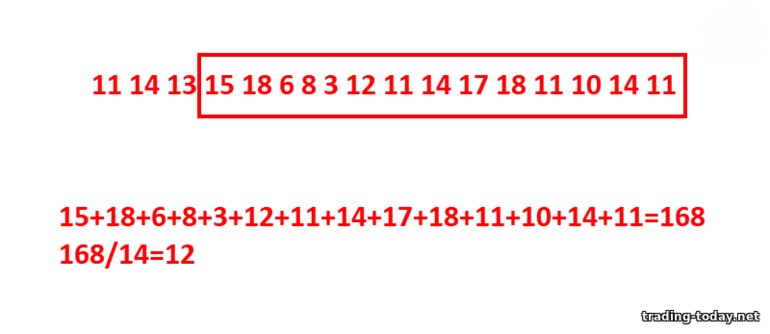
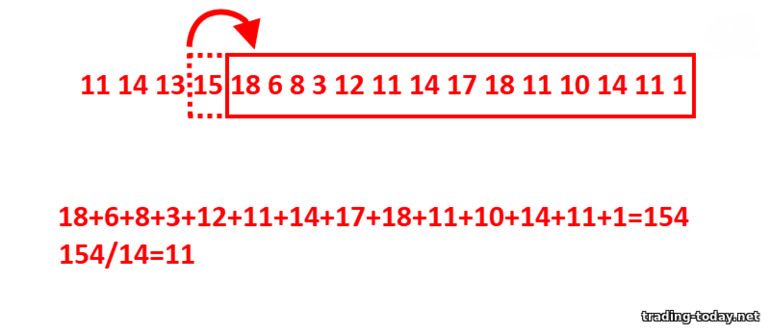
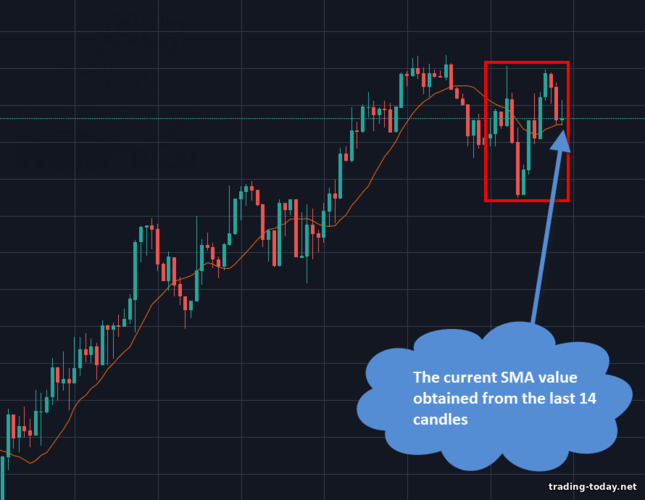
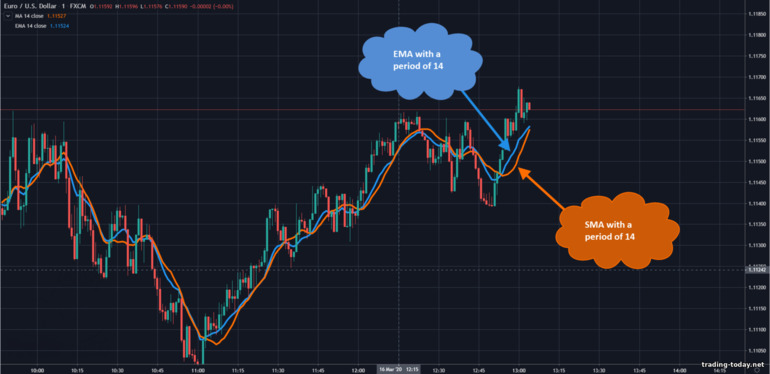
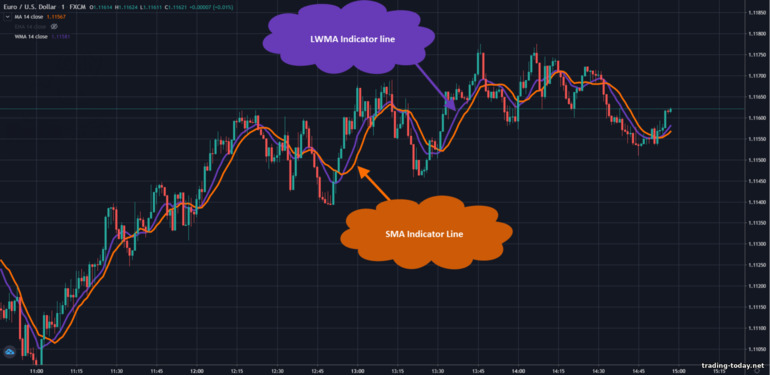

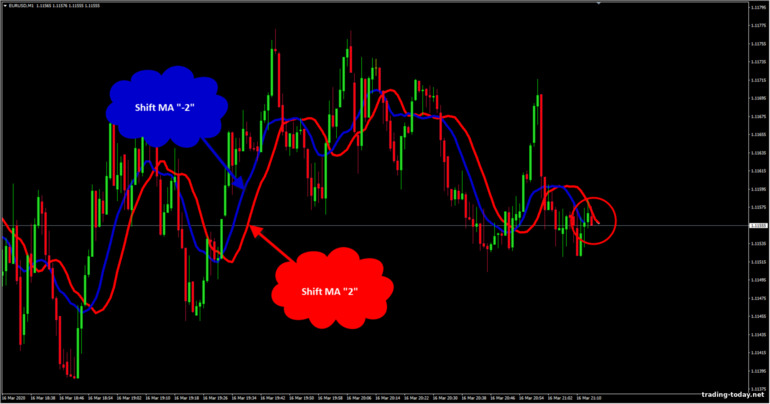
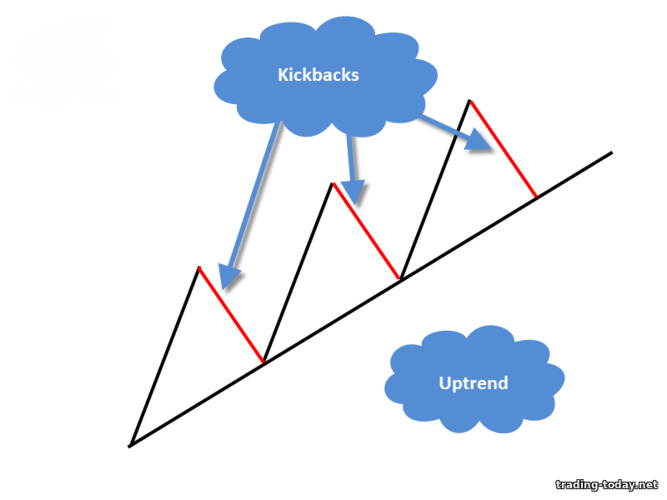
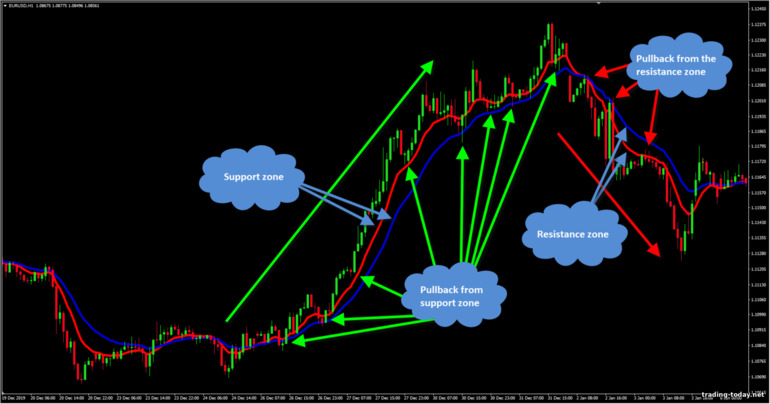
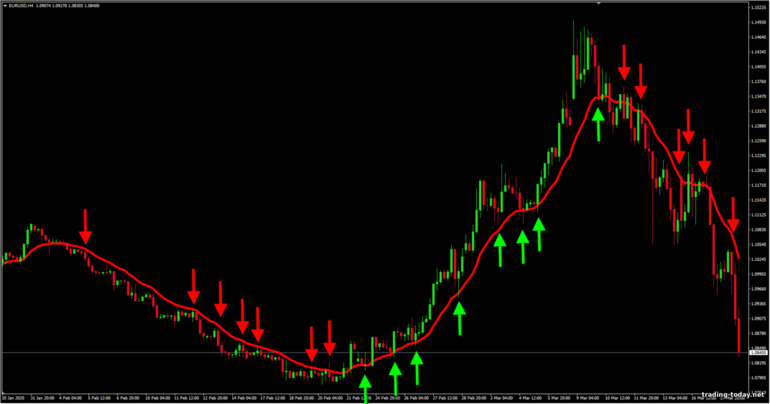
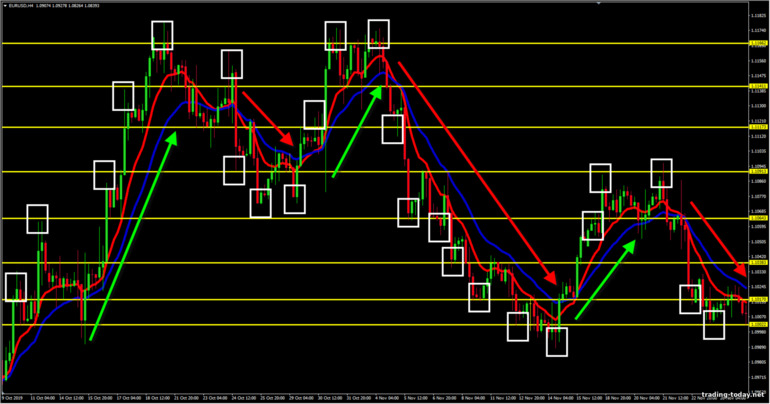
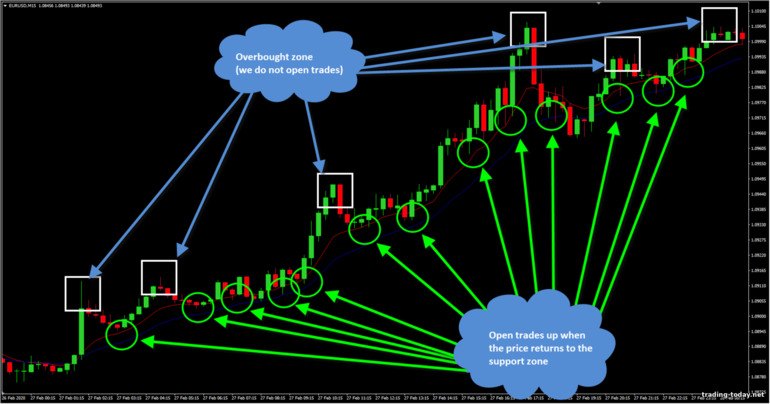
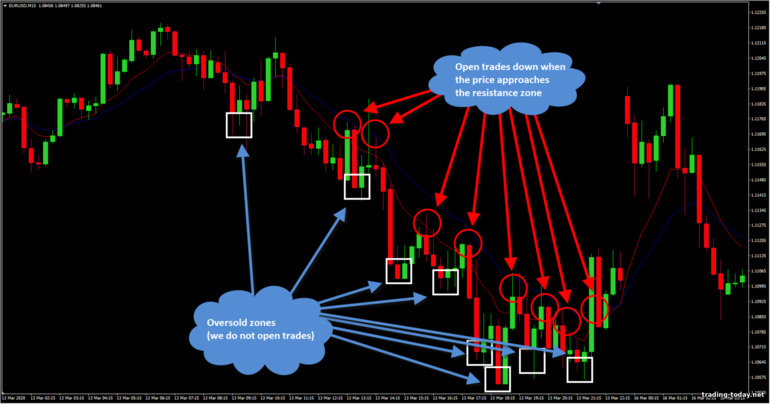
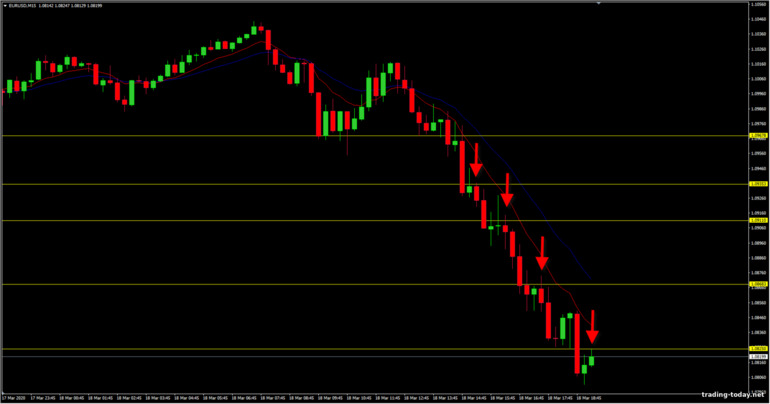

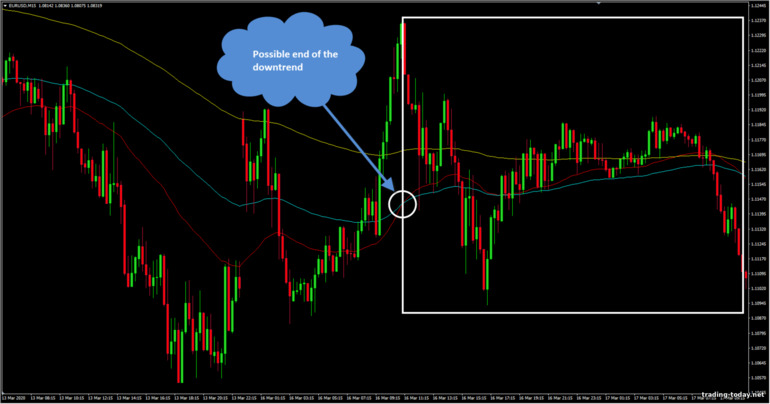
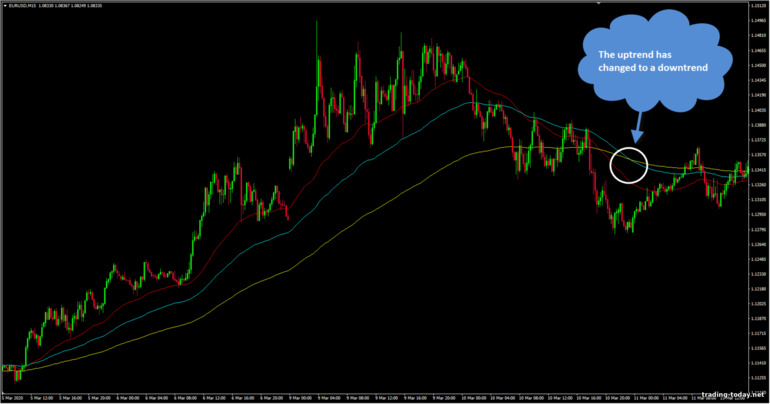
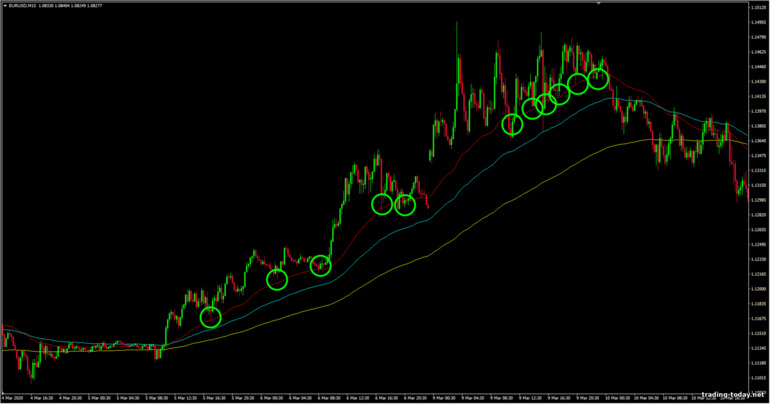
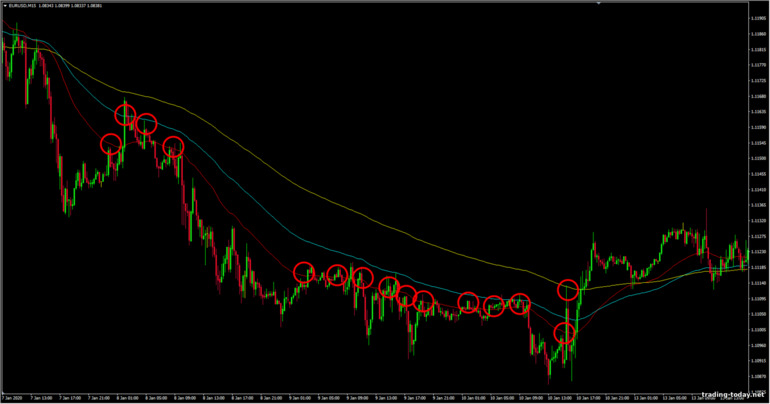
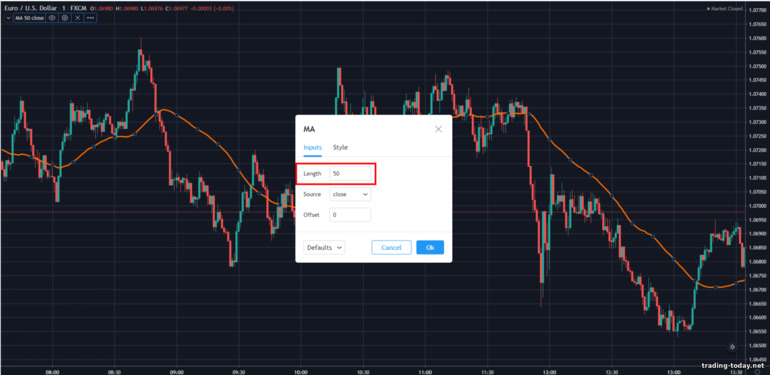
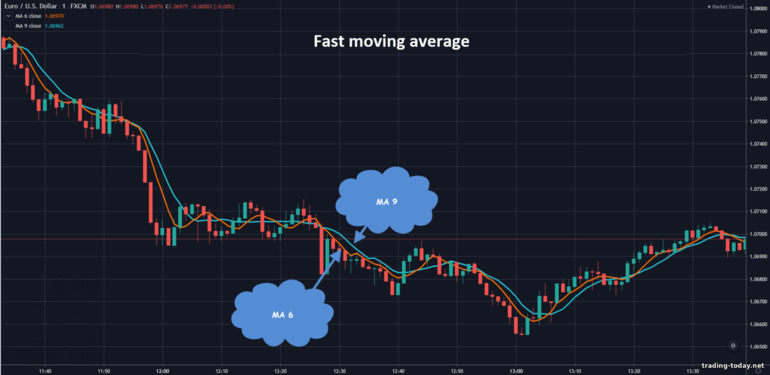
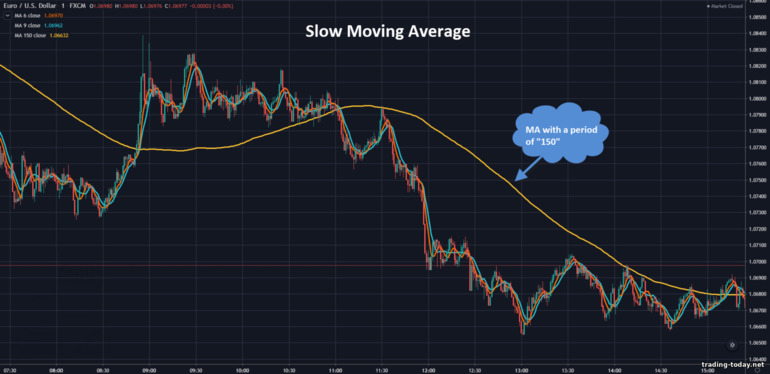
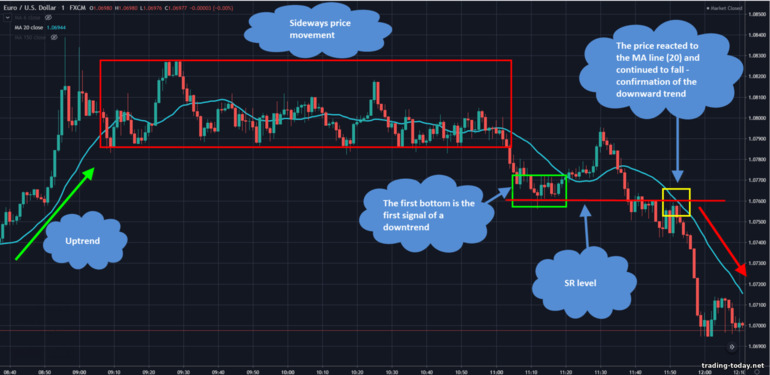
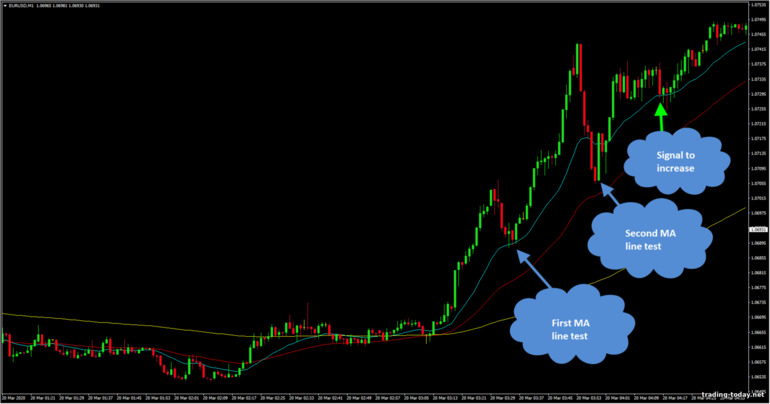
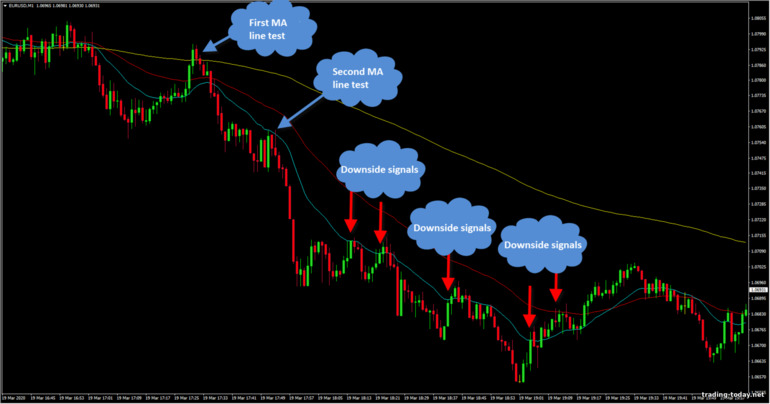
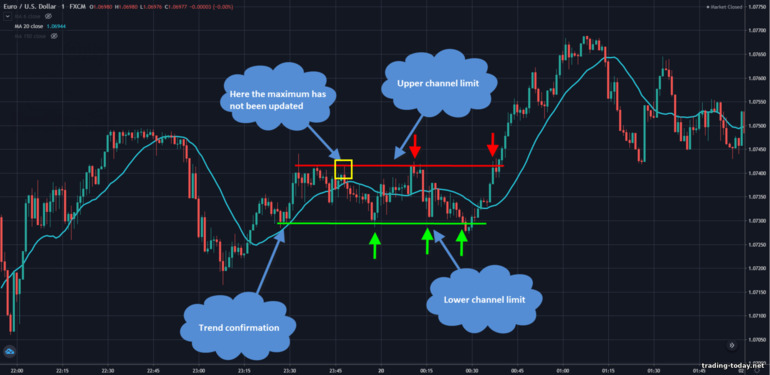
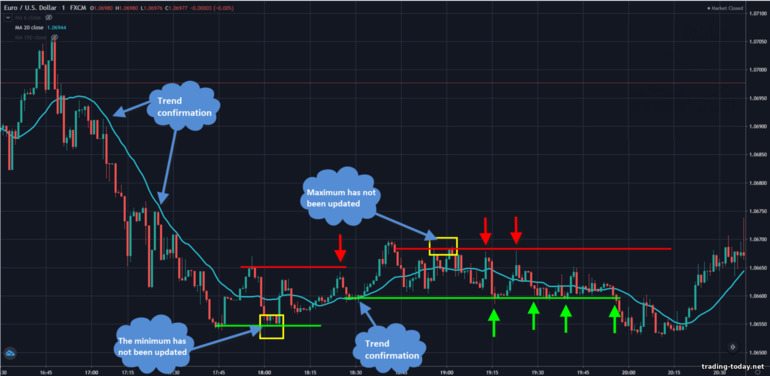
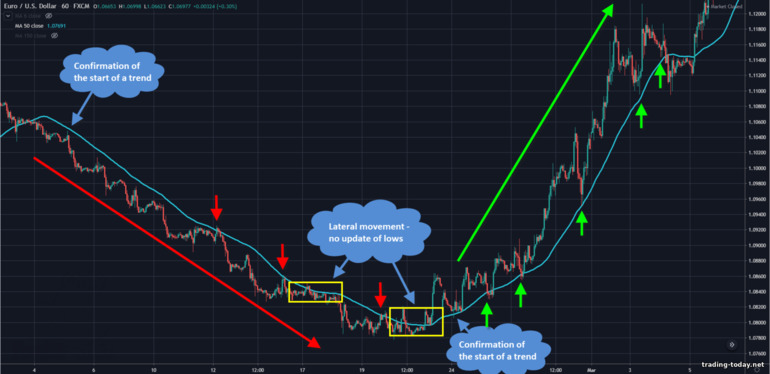
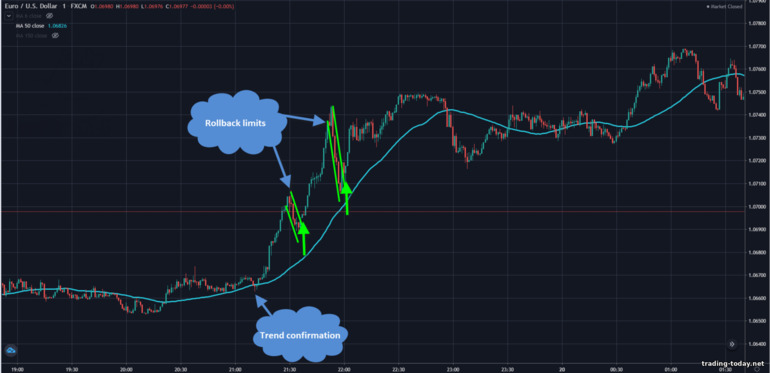
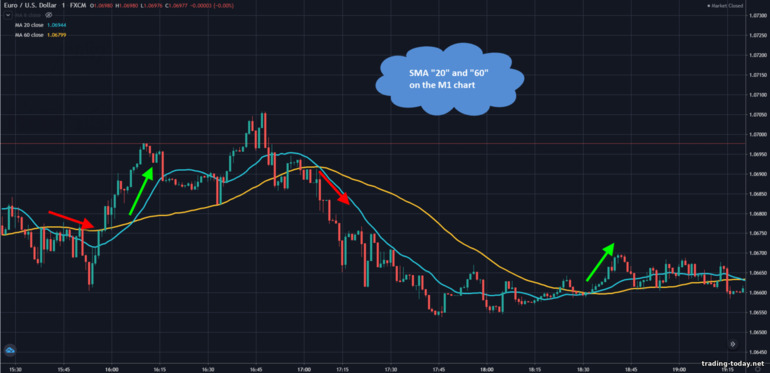
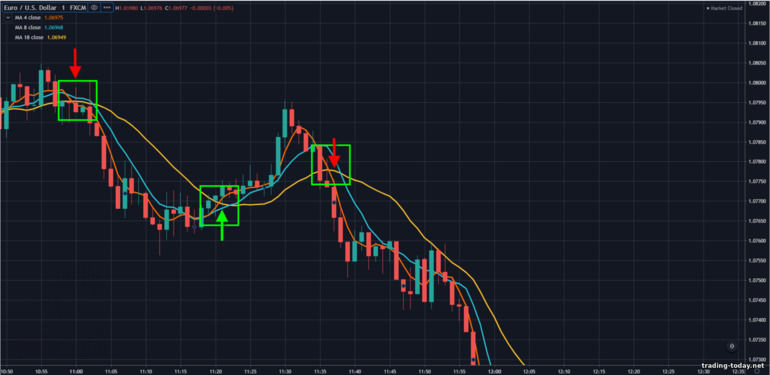
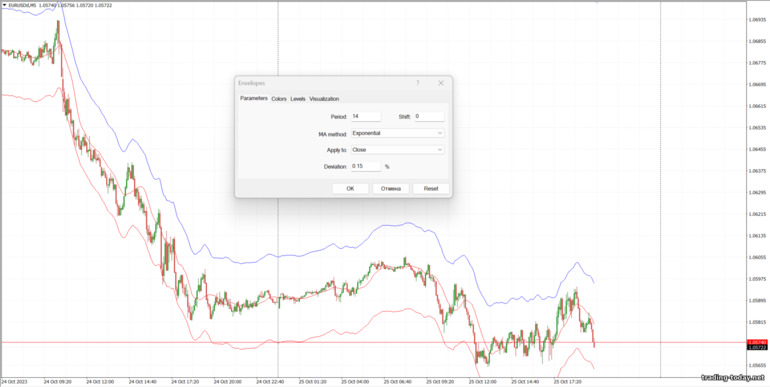
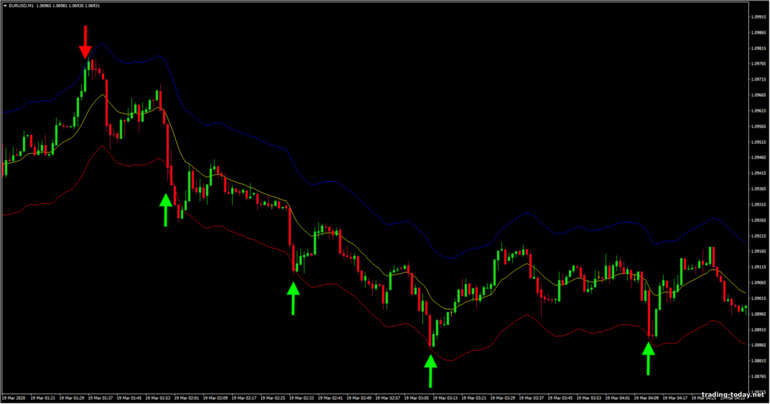
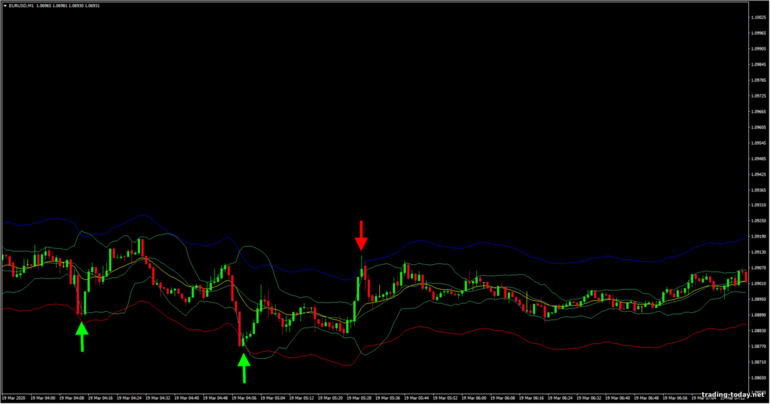
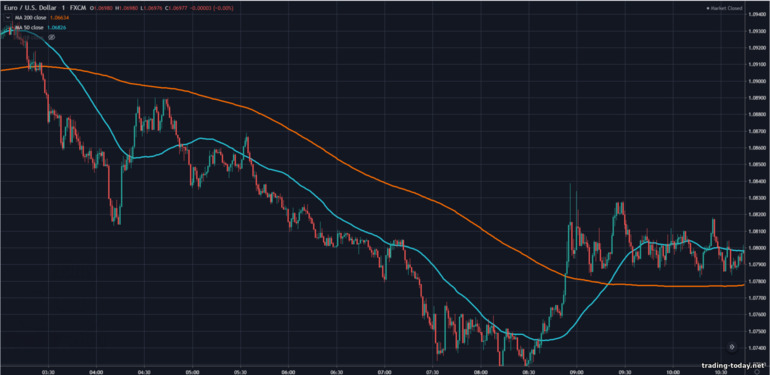
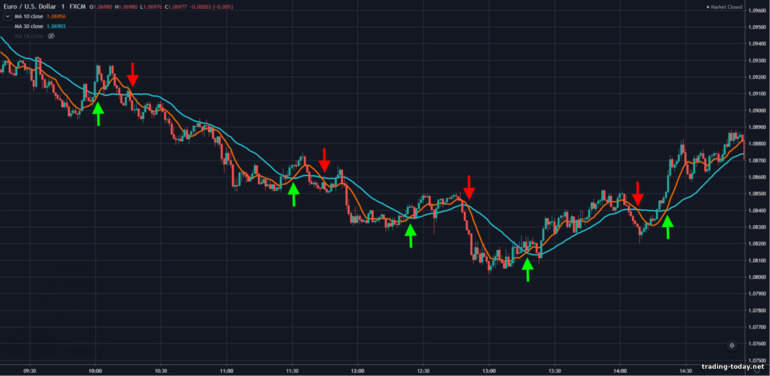

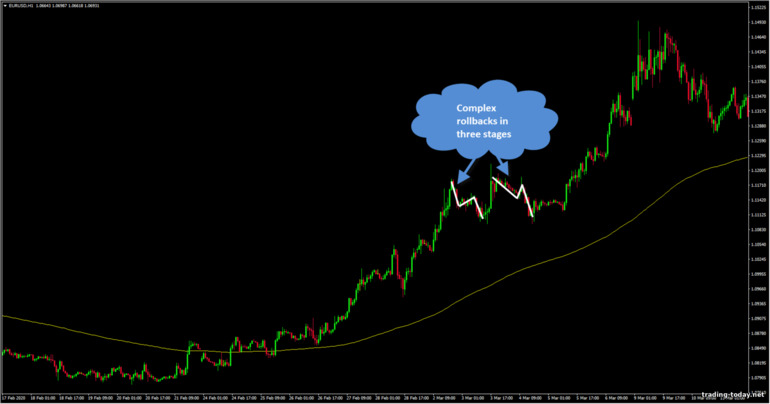

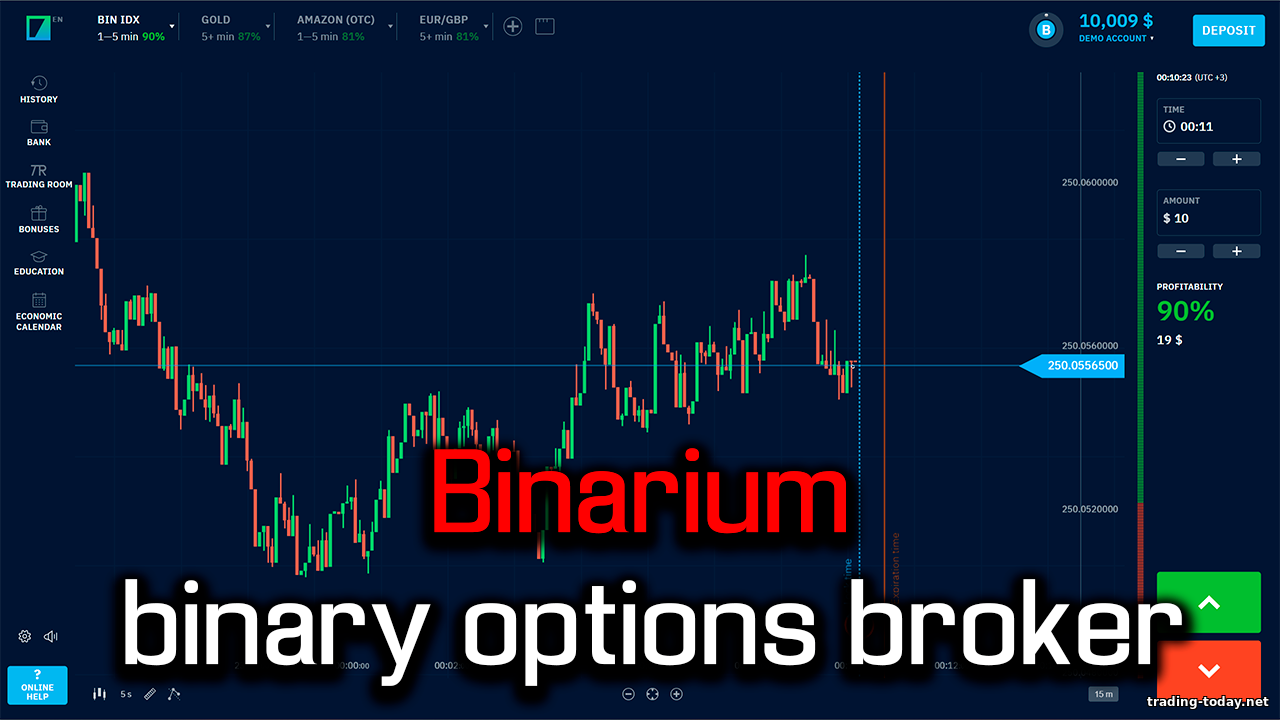
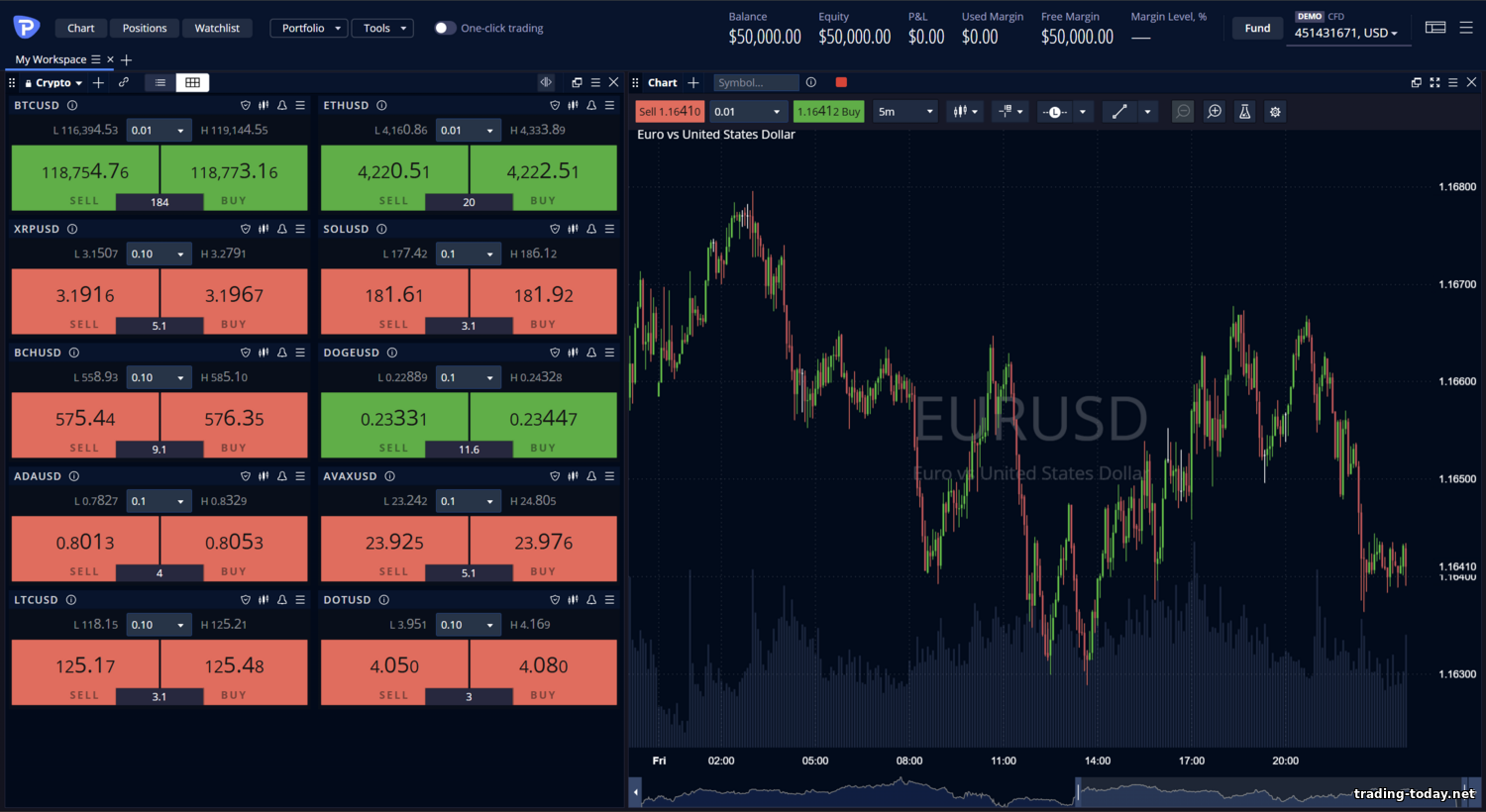

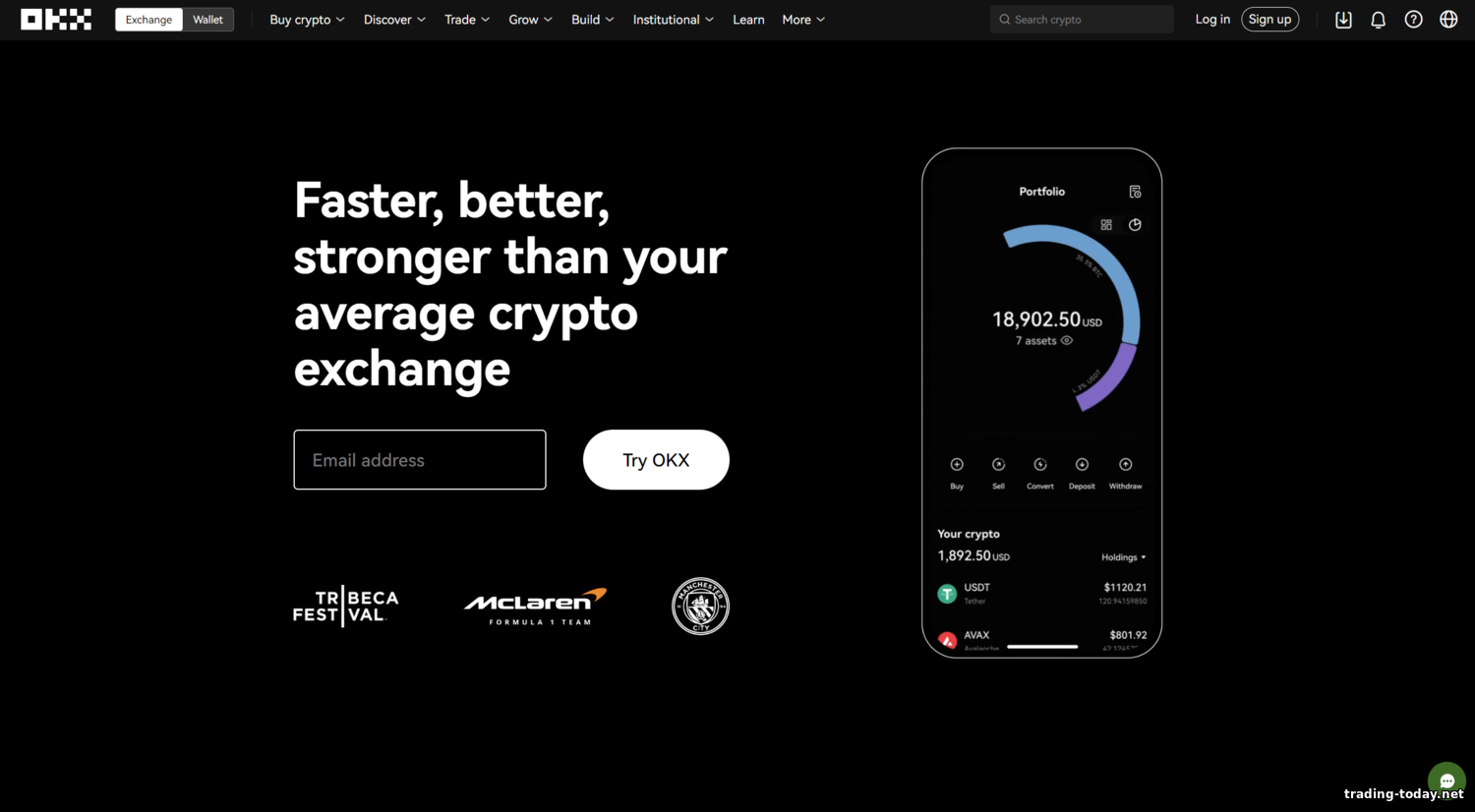


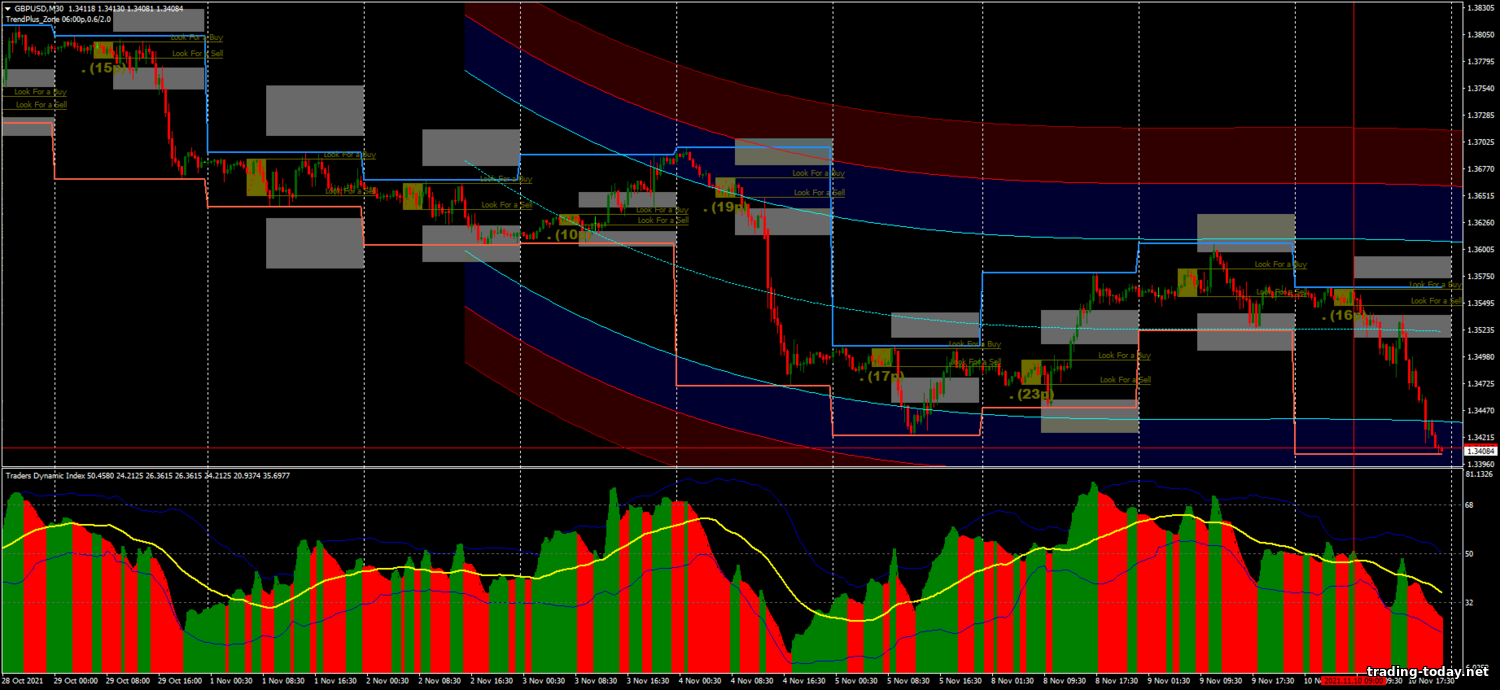

Reviews and comments